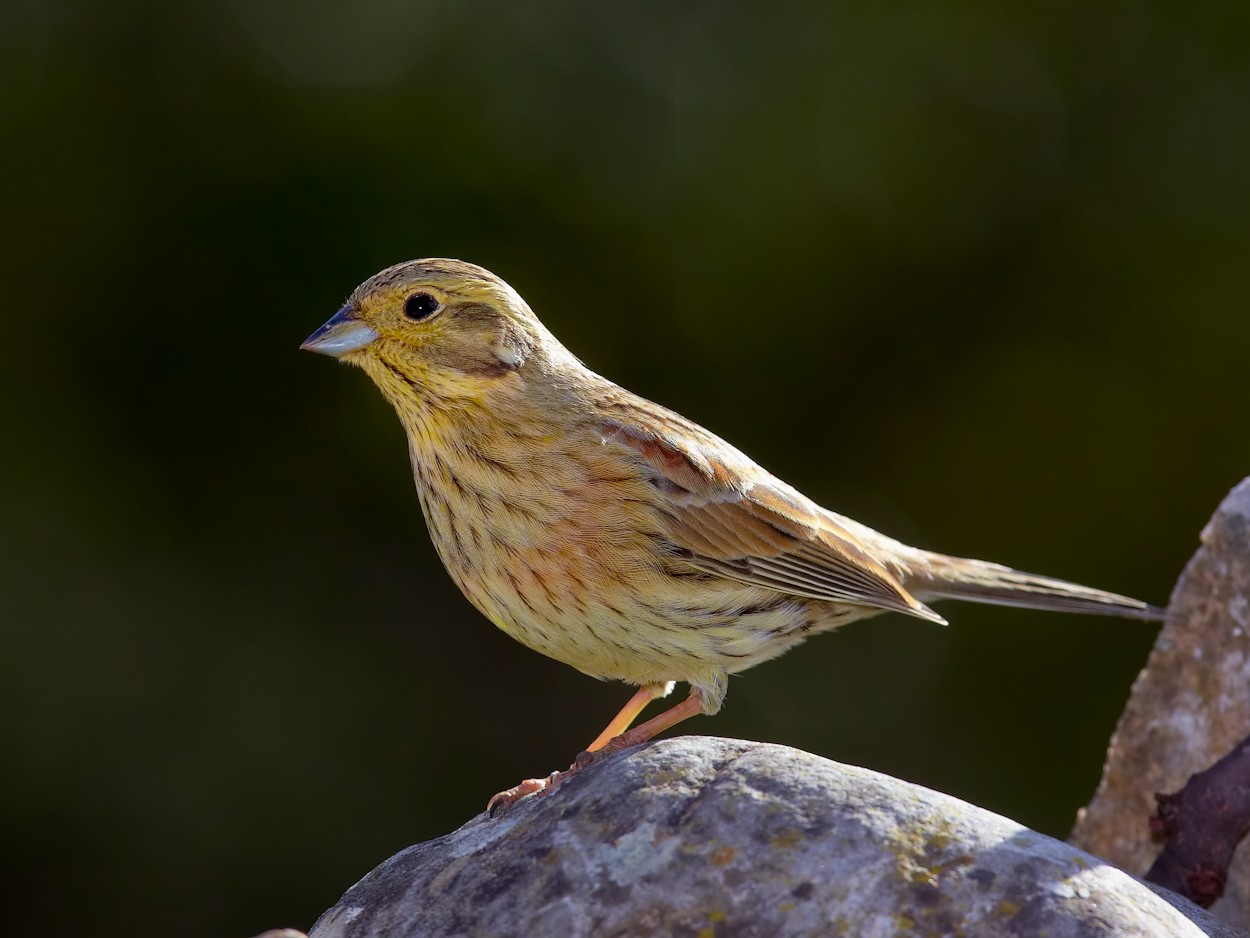Cirl Bunting
A species of Old World Buntings Scientific name : Emberiza cirlus Genus : Old World Buntings
Cirl Bunting, A species of Old World Buntings
Botanical name: Emberiza cirlus
Genus: Old World Buntings
Content
Description General Info
 Photo By Paco Gómez , used under CC-BY-SA-2.0 /Cropped and compressed from original
Photo By Paco Gómez , used under CC-BY-SA-2.0 /Cropped and compressed from original Description
The cirl Bunting is a small, plump bird with a distinctive yellow head, brown back, and streaked breast. It is found in a variety of habitats including farmland, scrub, and gardens. The bird feeds on seeds and insects and is known for its distinctive song, a mixture of trills and warbles. During the breeding season, a male Cirl Bunting sings from elevated perches to attract mates. This species is found in Europe, particularly in the southwestern regions. 
Size
17 cm
Colors
Brown
Green
Yellow
Gray
Life Expectancy
2-3 years
Nest Placement
Shrub
Feeding Habits
Cirl Bunting primarily consumes invertebrates like grasshoppers and crickets in summer, switching to small seeds in winter. Flocking behavior is observed during winter feeding, highlighting adaptability to seasonal food availability.
Habitat
Cirl Bunting's habitat encompasses farmland mosaics with grassy and arable patches, dense hedgerows, and scrub interspersion, extending to hilly and flat terrains, including urban green spaces. Favoring southern exposures and sheltered forest edges, they adapt well to varied landscapes such as vineyards and farmlands with scattered trees. They reside up to 1500 meters in elevation and prefer low-intensity farming areas, often wintering in fallow or stubble fields.
Dite type
Granivorous
General Info
Feeding Habits
Bird food type
Species Status
Through its Countryside Stewardship Scheme and environmental stewardship, Natural England has various options to conserve the species: Allow stubbles to overwinter. Leave crops such as spring barley stubble untreated (no fertiliser, pesticide, or cultivation) until the end of the following March. This allows the cirl bunting to feed over the winter on the spilt grain and seeds of broad-leaved arable weeds like fat hen, chickweed, and annual meadow grass Poa annua, which grow in the meantime. The loss of this old farming practice led to the species' decline. Maintain semi-improved or rough grassland and field margins, particularly tussocky grasses such as cock's-foot. These provide an overwintering habitat for insects, which in turn provides food for the cirl bunting and their chicks. Sow barley-based wild bird seed mix crop. This crop has an open structure, allowing birds to forage. Delay spraying insecticides to provide invertebrate food for as long as possible. Leave hedgerows untrimmed for periods of time. This provides breeding areas and food. A partnership between Natural England and the RSPB runs the "Cirl Bunting Project", part of a larger project called "Action for Birds". Through the efforts of conservation organisations and landowners, the cirl bunting population has increased from 118 pairs in 1989 to 700 pairs in 2003. However, their range has not expanded. 
Scientific Classification
Phylum
Chordates Class
Birds Order
Perching birds Family
New world sparrows Genus
Old World Buntings Species
Cirl Bunting